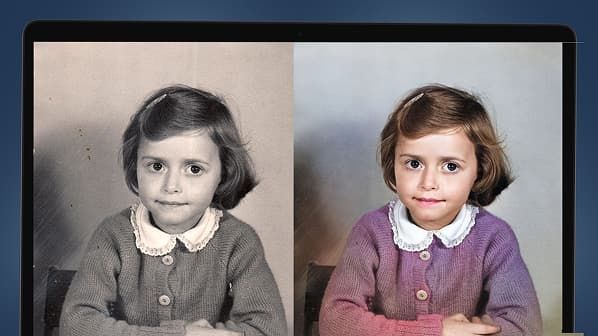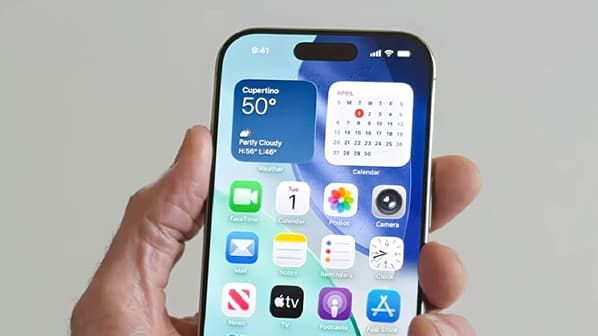Historically professional restorers devoted many hours to fixing scratches tear-related issues and fading while working on old photographs. Artificial intelligence (AI) has completely changed old photo restoration procedures through its sophisticated tools which deliver quick precise results for both restoration and enhancement functions. Advanced machine learning algorithms enable these AI tools to understand and restore old photographs and colorize their black-and-white versions which makes it possible than ever to restore nostalgic images.
A Brief Guide to Construction Jobs

The Technology Behind AI Photo Restoration
The core functionality of AI photo restoration utilizes deep learning algorithms which absorb extensive datasets of images so the software can identify typical photo damage patterns such as breakdowns and discolorations as well as spot missing parts to rebuild affected areas with intelligence. After users upload damaged photos AI devices sweep through the image while adding missing areas with correction codes which create perfect repairs with enhanced clarity.
Leading AI Tools for Old Photo Restoration
A number of AI-based platforms and software have become industry leaders, each with its own set of features tailored to various user requirements and levels of experience.
VanceAI Photo Restorer is a top pick that offers fully automatic restoration. One simply drags and drops their photos, and the AI erases scratches, tears, imperfections, and even brings back faded colors and facial features in seconds. It supports batch processing through desktop software, which makes it ideal for restoring bulk sets. The software also enhances resolution so one can enlarge images to print without losing quality.
Adobe Photoshop’s Neural Filters provide professional-level capability with advanced AI. Photoshop’s Photo Restoration filter has some manually adjustable sliders for picture improvement, restoring face detail, and scratch elimination. Effects are non-destructive, so noise, color defects, and other controls may be adjusted. While slower and subscription-based, Photoshop gives unparalleled control and consistent outcomes for professional restorers.
For one-time or budget-conscious users, Hotpot AI and PhotoRestore.io offer no-cost or low-cost online options. Hotpot AI allows for quick restoration and colorization with some limitations like daily usage caps, while PhotoRestore.io offers quick, watermark-free downloads without the need for an account. Although these applications may struggle with severe damage, they produce excellent results for minor to moderate photo flaws.
Other notable resources are Fotor AI Restorer, which gets a balance of usability and rather good customization quite right, and Pica AI, which works very well in automatic face restoration and detail but must be purchased to achieve a better quality of output. Mobile-friendly apps like Picsart AI Photo Restorer also extend restoration functionality to the smartphone platforms but with variable quality.
Practical Applications and Case Studies
AI photo restoration is more than aesthetics; it is also about safeguarding history and family heritage. The application of AI technology allowed experts to restore family portraits from the 20th century and war-age pictures and black-and-white images by repairing material damage while enhancing facial features and adding authentic color schemes.
A historic family photograph from 1900 that showed significant damage to the image and darkened colors evolved into a bright restored image which helped descendants reconnect with each of their ancestors. Restoration techniques for WWII photos affected by water damage and mold exposure brought back important historical details that covered military uniforms and awards. Researchers colorized black-and-white photos from the 1950s using their predictions of natural color corresponding to grayscale images thereby improving visibility for contemporary viewers.
How to Use AI Tools Effectively
In order to achieve the optimum result, users need to start by selecting a tool that is appropriate for their restoration needs and ease of use. For ease and quickness, completely automated web sites like VanceAI or PhotoRestore.io work best. For more control and pro-level quality, Adobe Photoshop’s Neural Filters continue to be the reference point.
Providing high-resolution scans of the original photographs ensures the AI sufficient detail to operate on. After the initial automatic restoration, the majority of software allows manual fine-tuning to modify color, contrast, and artifact removal. Batch processing features are useful for big collections, saving time and effort.
Privacy and data protection should also be given some thought, as certain web-based applications delete uploaded images after processing to protect user material.


Guess you like
-

Starter’s Guide to Buying the Right Camera for Beginners
-

A Practical Investment on Fixed Income: A Guide for Today’s Markets
-

8 Brilliant Smart Home Automations to Save Money
-

What RV Passengers Should Never Attempt to Do on the Run
-

The Rise of No-Touch Driving Laws in America
-

Why Blind Faith in AI is a Dangerous Game
Trending
-
 1
1A Smarter Way to Surf the Web with ChatGPT Atlas
-
 2
25 Apps Using Apple Intelligence to Transform Your Daily Life
-
 3
3Five AirPods Features That Make Everyday Listening Smarter and More Seamless
-
 4
4Battlefield 6 Beginner Tips for Winning Fights and Surviving Each Mode
-
 5
5Your Chatbot AIs Could Soon Determine What You View on Facebook and Instagram
-
 6
6How Seam Sealer Quietly Keeps Your Car Alive


